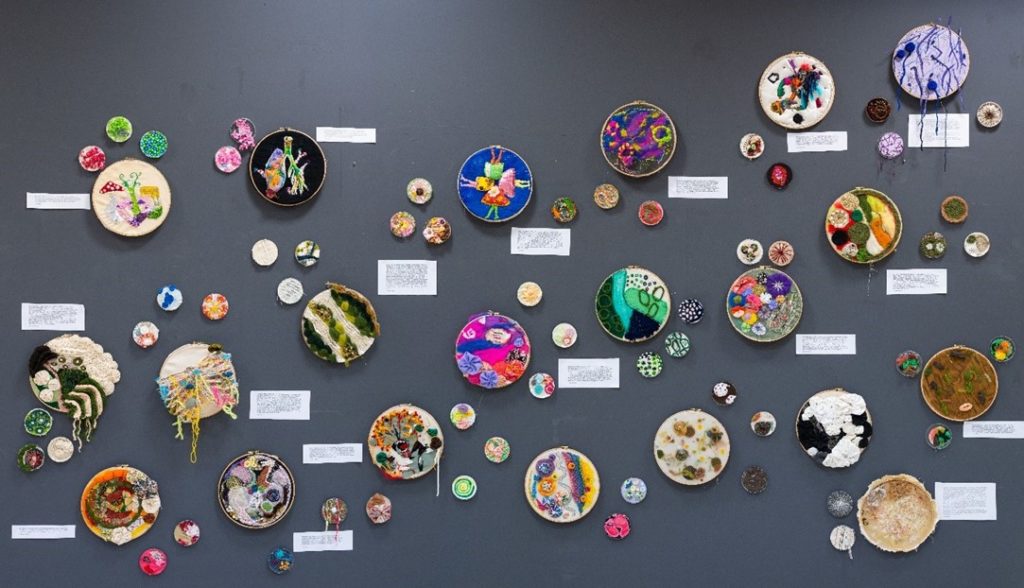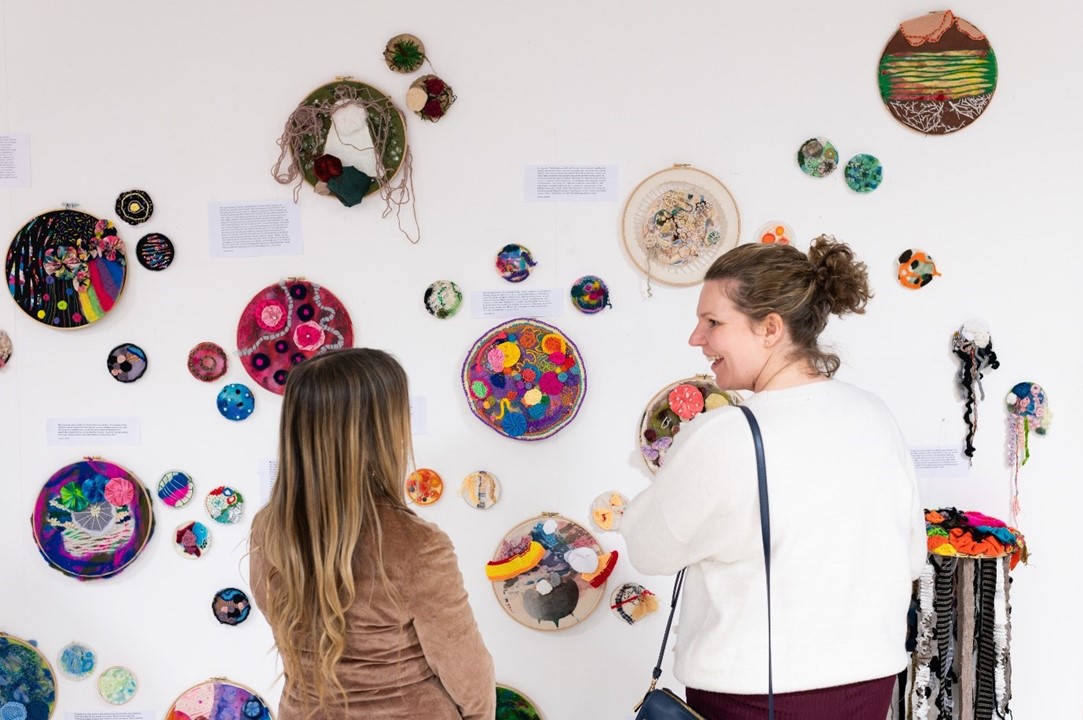Ange Brennan, Public Engagement and Communications Manager for the MRC Centre for Medical Mycology, speaks to us about an ongoing collaboration between mycology researchers and Exeter College. This project invites the college’s textile students to explore the Centre’s research through art, giving both students and academics new insights into their work.
Amount of award: £2000
This is the second phase of a collaboration between the MRC Centre for Medical Mycology and first-year textile students at Exeter College. Textile students were invited to find out more about the work that we do at MRC CMM and to use this information to create an art piece, based on the science used in medical mycology. These pieces were then displayed in an exhibition in Exeter city centre.
We used the funding from the PER grant to supply materials to the students at Exeter College. The students are from very different backgrounds and this grant allowed everyone on the course to have access to the same materials and resources, encouraging them to be as creative as possible with their designs. The grant was also used to book the Positive Lights venue in Exeter city centre to host the exhibition. We held an open evening art exhibition for the students and their friends and family, as well as the MRC CMM researchers, but the exhibition was also opened to members of the public. This event was staffed by researchers from MRC CMM and was a good way to engage people with the work that the Centre does to combat deadly fungal infections.
This project has really strengthened the bond between the college and the MRC CMM, and we are delighted to have been asked to run a third phase. This is a great opportunity for the researchers at MRC CMM to practice communicating their research to a lay audience and to view science from a different perspective. Our data suggests that by engaging these students with medical mycology, they have brought the centre’s work into conversation with hundreds of other people.
The students also benefitted from learning about a topic that they didn’t know much about. The subject of medical mycology works well as a first-year project for the students, and the teaching staff at Exeter College have all mentioned how engaged the students have been when learning about our research.
We also ran an engagement event with The Pelican Project, an Exeter-based group supporting adults with additional needs. We used the artworks created by the Exeter college students to frame a workshop around ‘Fungus and the Senses’ and we hope to be able to run this for other organisations in the future. This was particularly important as this is an audience that does not usually have access to mainstream STEM activities.

The biggest challenge around this project was to do with timings – aligning the priorities of the college teaching staff, the students and the availability of researchers from the Centre, proved to be difficult. Originally, we wanted our exhibition to be in December to capitalise on increased Christmas footfall, but due to venue complications, the event was held in January 2025. Our next phase will involve the 2025/26 intake of students, and the MRC CMM researchers are already volunteering to take part, having seen how interesting and enriching the project is.
The PER grant that we received has allowed us to upscale this project from a small case-study involving five students to include an entire first-year cohort. By funding the second phase of this project, it has also given us the freedom to experiment with formats to see what works best for all parties.
Now that we have a better idea of time commitments for this project, we can get things in place much earlier on in the process and hope to host the exhibition in December this year. We are also working to ensure we have more media coverage of the event to allow greater exposure.
This project has cemented a creative and enriching collaboration between Exeter College and MRC CMM – one we are constantly revising to ensure it works for both institutions. By continuing with this work and growing it every year, we are hoping to raise awareness of the important research we do, and support students in the local community with interesting and collaborative work.

